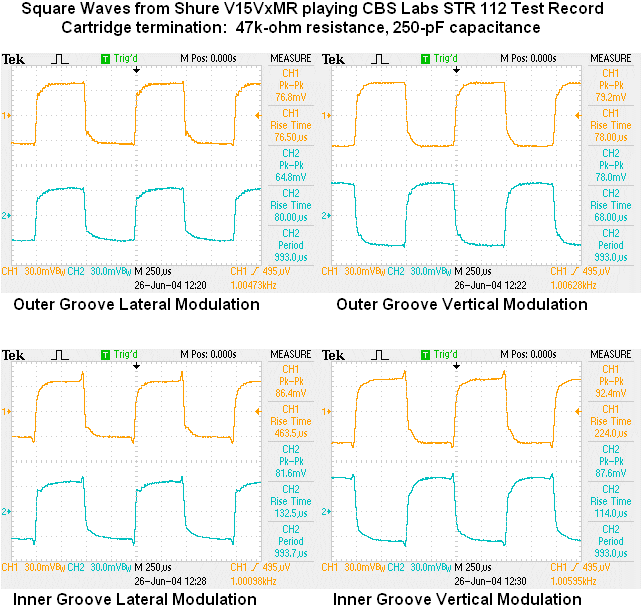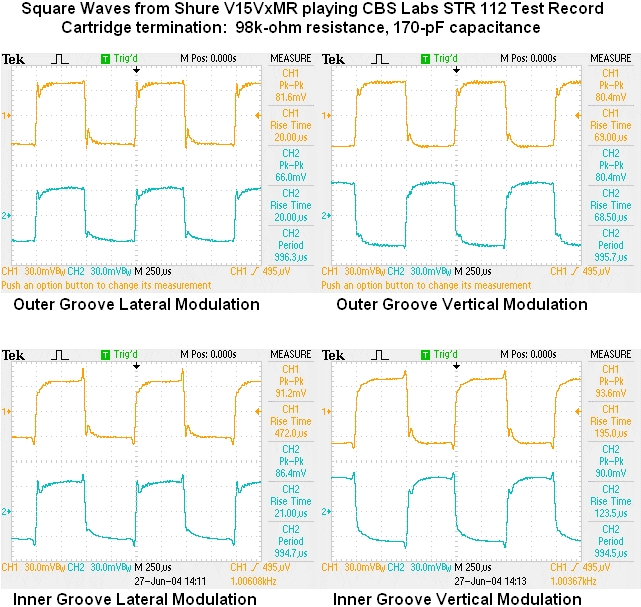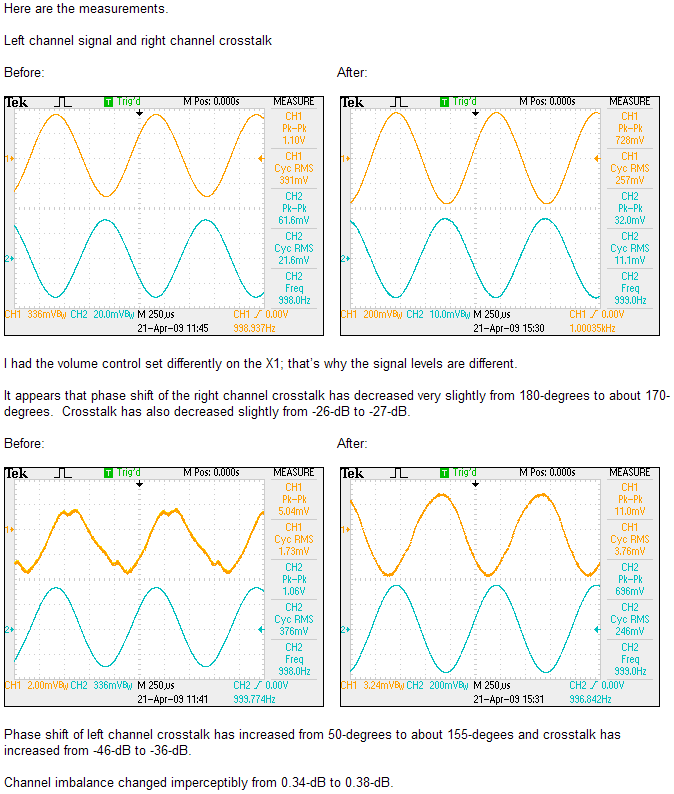Measuring Intermodulation Distortion to adjust VTA
124.168.106.100 |
||
| Posted on March 18, 2013 at 06:17:51 | ||
|
Posts: 306
Location: AU Joined: June 1, 2006 |
||
| RE: How to digitize and record?, posted on March 18, 2013 at 18:50:37 | |
|
Posts: 23900
Location: Central Kentucky Joined: December 20, 2000 Contributor Since: January 29, 2004 |
I use an Alesis Masterlink hard disc digital recorder, which is capable of making 24/96 digital recordings. Then I transport the files to my computer for analysis. Unfortunately, the Alesis Masterlink is no longer in production, so you would have to find some other method for digitally recording vinyl from your preamp tape output. Many people use their computers with an appropriate ADC interface component. One thing I forgot to mention about my IMD measurements is that I got much lower values of IMD when playing lateral grooves as opposed to vertically modulated grooves. Consequently, vertically modulated grooves might be the best choice for adjusting VTA. Unfortunately, all my test records are old and were cut with 15-degree VTA, so I don't think they would be appropriate for modern cartridges with 20 to 23-degree VTA. Interestingly, the Shure V15VxMR had significantly higher levels of both harmonic and intermodulation distortion than the Audio Technica OC9ML/II. The following sets of graphs are from vertically modulated grooves: 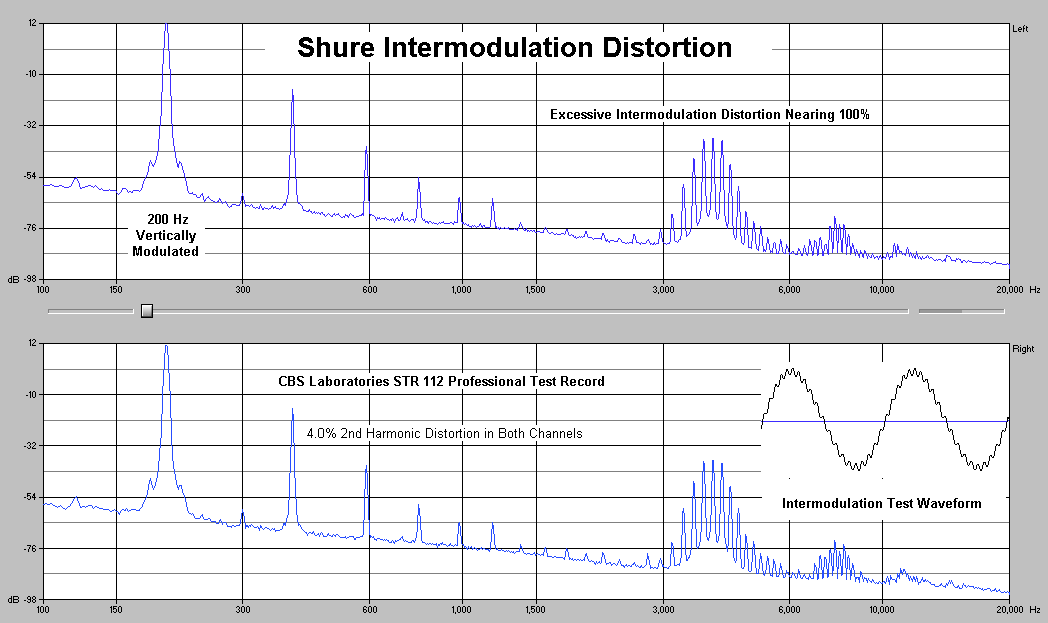  These next sets of graphs are from laterally modulated grooves: 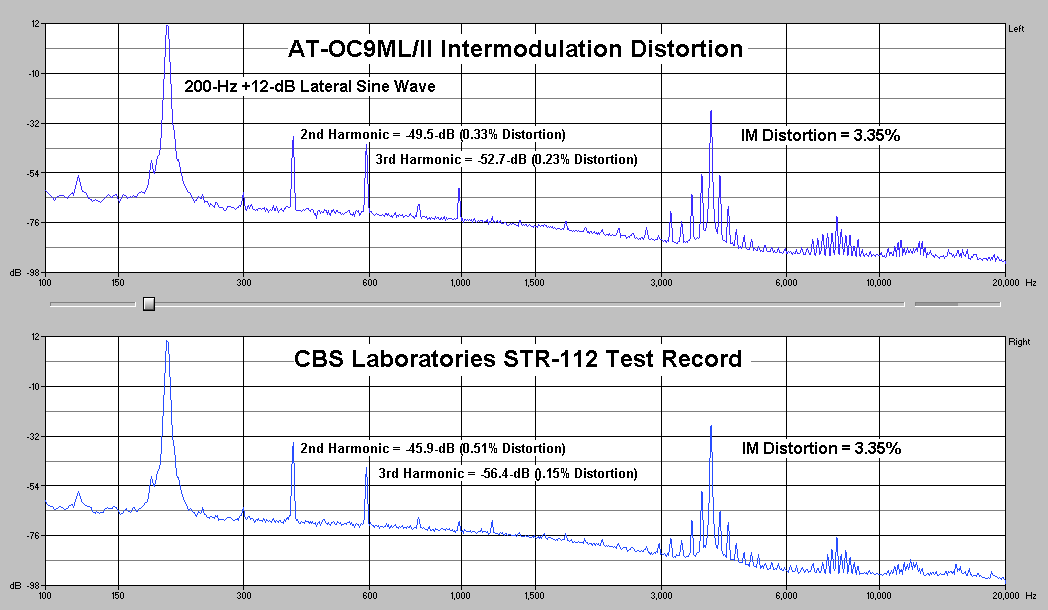 |


